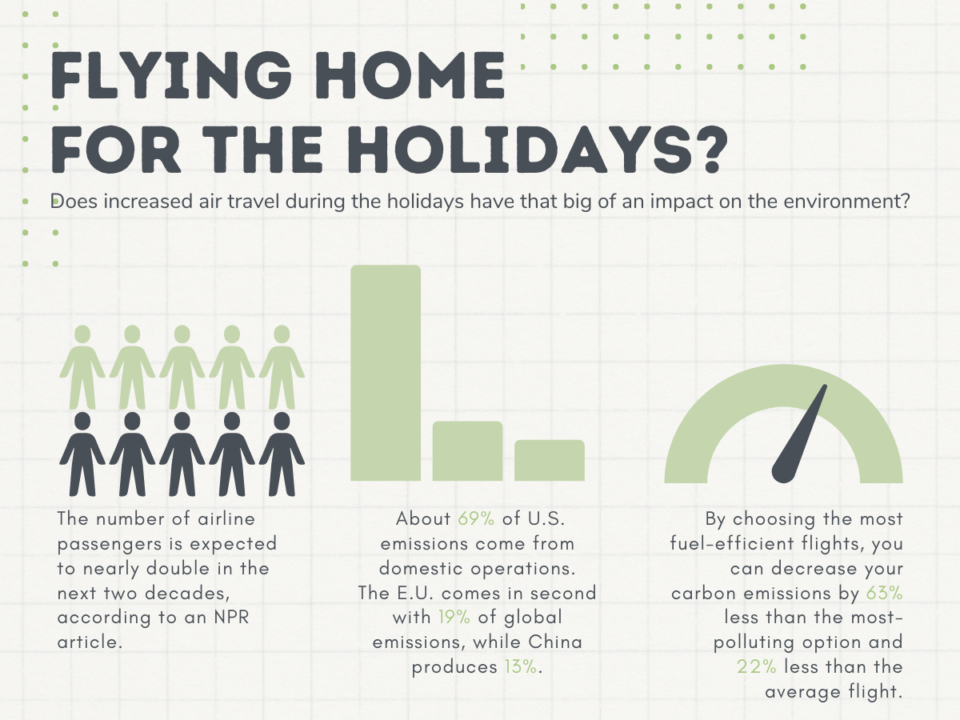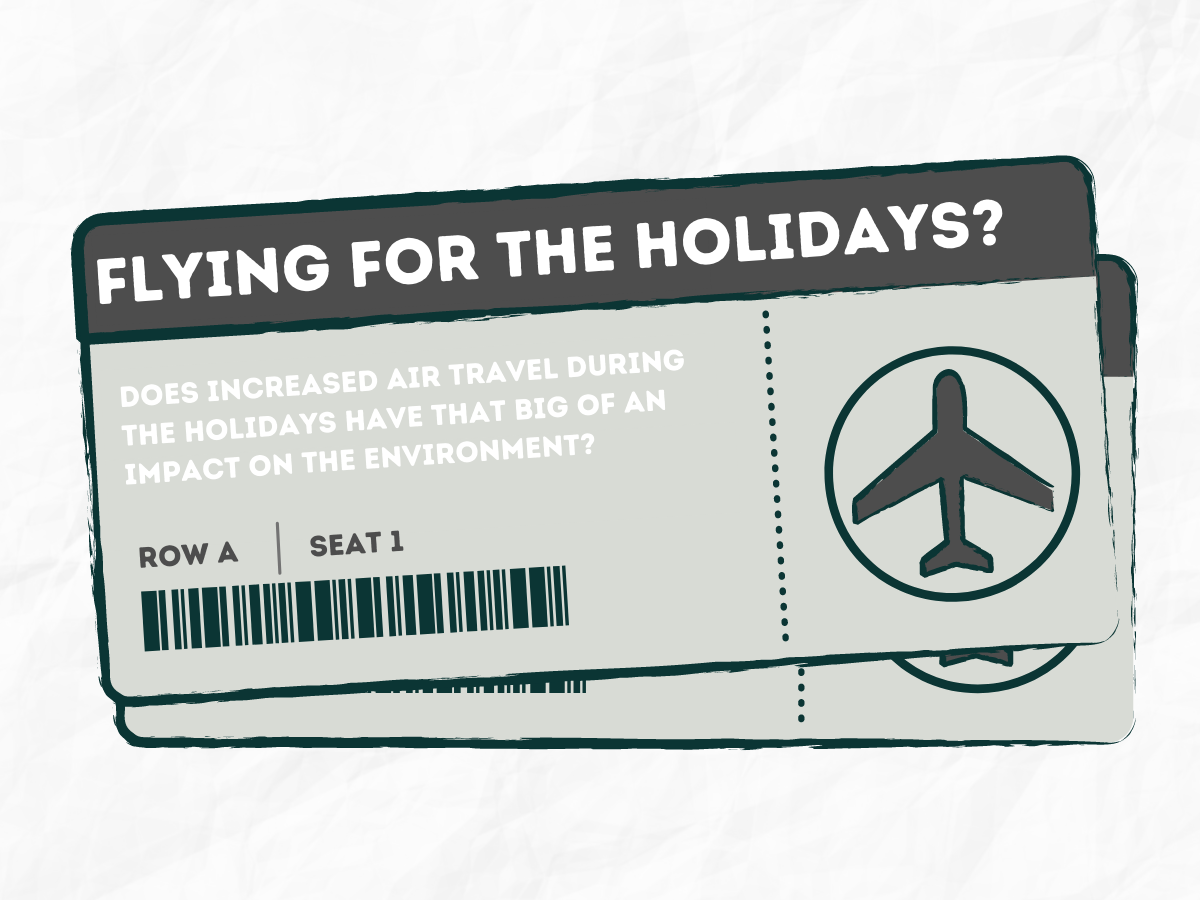
As I have grown older, and especially as I moved to Minnesota to start college, I have become more aware of myself, more aware of the world around me and more aware of climate change.
I, like many others, love to travel. Since coming to St. Thomas, I’ve visited 10 different states for sports travel and personal trips. Road trips and flying to new places are fun, exciting and allow people to see parts of the world they wouldn’t have seen before. But is there a price—an environmental one—that comes with traveling?
Although aviation only makes up 3% of global carbon emissions, it accounts for the highest percentage of the average person’s carbon footprint, according to an article in the New York Times.
The U.S. itself produces the most carbon emissions from planes, making up almost a quarter of the world’s total emissions, according to an article by NPR. The European Union and China follow in second and third place, respectively.
FlightFree is a Swedish software created in 2018 that is dedicated to persuading people to think twice when flying by including testimonials who have decided to stop flying for the sake of the environment. Moreover, FlightFree also tells people exactly how much of an environmental impact their flight is going to have.
The software uses a special algorithm to help estimate the exact environmental impact of each flight. Using the Flight Emissions Calculator on its website, I checked how a flight from Minneapolis to Tampa, Fla. would impact the environment, and what I found was astounding.
The round-trip emissions per passenger are equivalent to .8 metric tons of carbon dioxide. Interestingly, the website also tells you how avoiding this trip will equate to being vegetarian and carpooling. Skipping the trip would be as “climate friendly” as being vegetarian for 1.4 years and carpooling for .7 years, according to the emissions calculator.
Now, multiply that by thousands of flights world-wide everyday. Eventually, it will prove to be detrimental for the environment if we keep flying at the rate that we are. On top of this, the number of airline passengers is expected to nearly double in the next two decades, according to the NPR article.
To me, the testimonials on the FlightFree website are also something that can be persuasive, beyond just looking at the numbers. A man named David Matthews from Wisconsin said he stopped flying in 2018 because the environmental impact would “dramatically alter” the lives of his children and grandchildren for generations to come. There are more than 25 testimonials just like that on the website.
By choosing the most fuel-efficient flights, you can decrease your carbon emissions immensely. According to the New York Times article, “choosing the least-polluting itinerary on a route could emit 63 percent less CO₂ than the most-polluting option, and 22 percent less than the average flight.”
So, I’m asking that you please just think a bit longer before you click “book” on your next flight.
Cam Kauffman can be reached at kauf8536@stthomas.edu.

